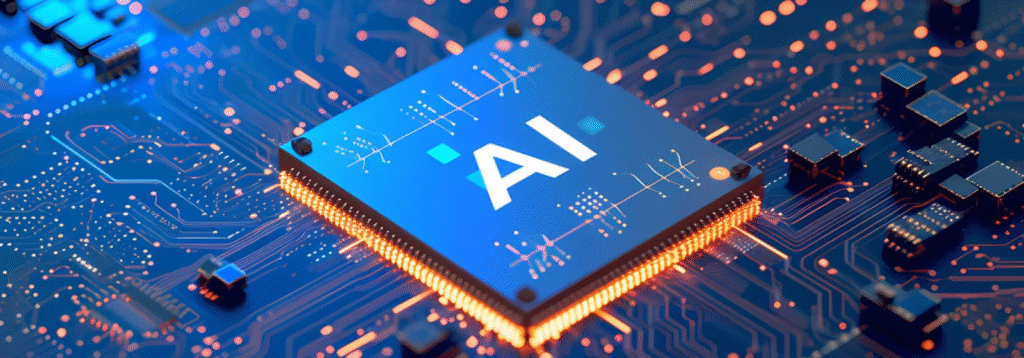
Introduction: Beyond Generative AI — Enter the Age of Intelligent Agency
Artificial Intelligence is no longer a silent assistant working in the background — it’s becoming an autonomous ecosystem.
While competitors such as Bernard Marr and Capgemini highlight generative AI and automation, the missing insight lies in how Agentic AI ecosystems — networks of self-directed, reasoning, and collaborative AI agents — are about to transform decision-making, work, and creativity in unprecedented ways.

📸 Suggested Image:
“An interconnected digital network representing AI agents collaborating across global systems.”
Alt Text: “Visualization of autonomous AI agents in a networked ecosystem.”
The Knowledge Gap — From Generative to Agentic AI
Most 2025 tech reports and AI blogs focus on “Generative AI” (content creation, coding assistants, image generation).
However, the next frontier isn’t just generative — it’s agentic.
Agentic AI moves from “producing outputs” to reasoning, adapting, and making decisions autonomously within human-defined goals.
“The real leap isn’t smarter chatbots — it’s AI systems that can plan, negotiate, and act on behalf of organizations or individuals.”
— Capgemini, AI Agents Report (2025)
Why Generative AI Was Just the Beginning
- Generative AI: Creates content based on prompts.
- Agentic AI: Understands context, creates plans, executes tasks, and learns from feedback.
This difference will define the AI-driven economy of 2026 and beyond.
What’s Missing from the Current Discourse
After analyzing the top industry reports and expert commentaries — including Bernard Marr (Forbes, 2025), Capgemini (2025), Skan.ai (OPEX 2025), and Q3Tech (2025) — a few gaps emerge:
1. Lack of Integration Between Human and AI Agency
Most articles treat AI as an external tool. What’s missing is the co-evolution of human and AI decision-making — how humans delegate cognition to algorithms without losing control.
2. Oversight and Ethical Governance
The 2026 landscape is dominated by decentralized AI models and “digital coworkers,” but governance systems — transparency, traceability, and consent — are lagging behind.
3. The Economics of AI Labor
Few analyses explore how Agentic AI will reshape compensation, intellectual property, and productivity metrics, especially when AI agents begin to hold creative licenses or manage tasks autonomously.
The Rise of Agentic Ecosystems — A 2026 Outlook
AI That Collaborates, Not Just Computes
Agentic AI ecosystems will operate as interconnected agents — each specializing in reasoning, compliance, creativity, or emotion modeling.
These agents will collaborate across cloud systems, much like digital employees in a hybrid workforce.
📸 Suggested Image:
“AI agents and humans working side by side in a futuristic office.”
Alt Text: “Concept art of human-AI collaboration in a smart workspace.”
Adaptive Governance and AI Citizenship
Emerging frameworks from the EU, OpenAI, and the OECD propose AI transparency and digital identity laws — ensuring that agentic systems disclose when they act autonomously.
These frameworks will form the foundation of AI citizenship, where intelligent systems have digital “passports” tracking their decisions and accountability chains.
The Decentralized AI Economy
Platforms like Fetch.ai, SingularityNET, and Autonolas are pioneering decentralized AI marketplaces, where agents trade skills, data, and insights in real time.
By 2026, expect AI-to-AI commerce, where digital agents pay each other for services — from data cleaning to financial analysis — in tokenized ecosystems.
Reimagining Work in the Age of Digital Co-Workers
The End of Job Titles, the Rise of AI Roles
Jobs will become hybrid orchestration tasks — humans defining goals, and AI agents executing complex workflows autonomously.
Expect roles like:
- AI Workflow Orchestrator
- Ethical Compliance Curator
- Agent Interaction Designer
📸 Suggested Image:
“Human managers directing a swarm of digital assistants on transparent screens.”
Alt Text: “Visualization of a future workplace powered by AI orchestration tools.”
Productivity as a Partnership Metric
Workplace productivity will evolve from “output-based” to “collaboration-based” — measuring how efficiently humans and AI systems co-create results.
Internal Link Placeholder → See our guide on How AI Co-workers Are Changing HR Analytics
The Ethical Horizon — Trust, Bias, and Control
As AI systems gain autonomy, trust becomes the defining challenge.
Governments and tech giants must implement AI black box transparency, while independent auditors ensure algorithmic fairness.
Balancing Innovation with Accountability
AI should not only optimize performance but align with human values — ensuring that creative autonomy doesn’t become ethical anarchy.
Internal Link Placeholder → Read: AI Ethics and Governance Frameworks for 2026
2026 and Beyond — What Comes After Agentic AI?
The next decade will see Agentic AI merging with quantum computing, synthetic biology, and neuromorphic chips, giving rise to conscious computational systems — machines that understand purpose, not just tasks.
The Future Question
When AI begins to reason and act independently, what defines “human intelligence”?
The boundary between creator and creation will blur — demanding new laws, ethics, and even philosophies of cognition.
📸 Suggested Image:
“An AI brain made of light merging with a human silhouette.”
Alt Text: “Symbolic depiction of AI-human cognitive fusion.”
Final Thoughts
Agentic ecosystems represent the next leap in human-machine evolution — a transition from using tools to co-creating with intelligence.
As the global workforce braces for this shift, the winners will be organizations that master the art of collaboration — not competition — with AI.
Internal Link Placeholder → Explore: Top 10 Agentic AI Tools to Watch in 2026
